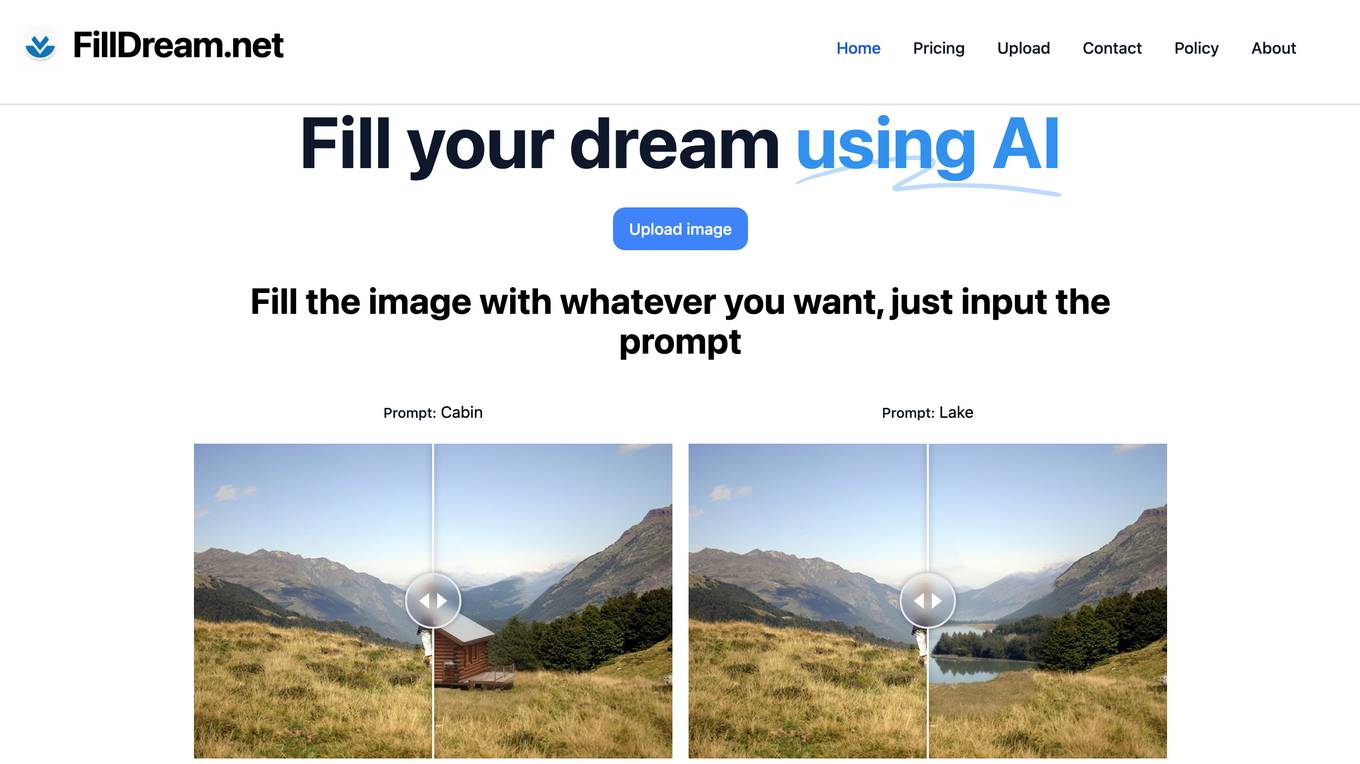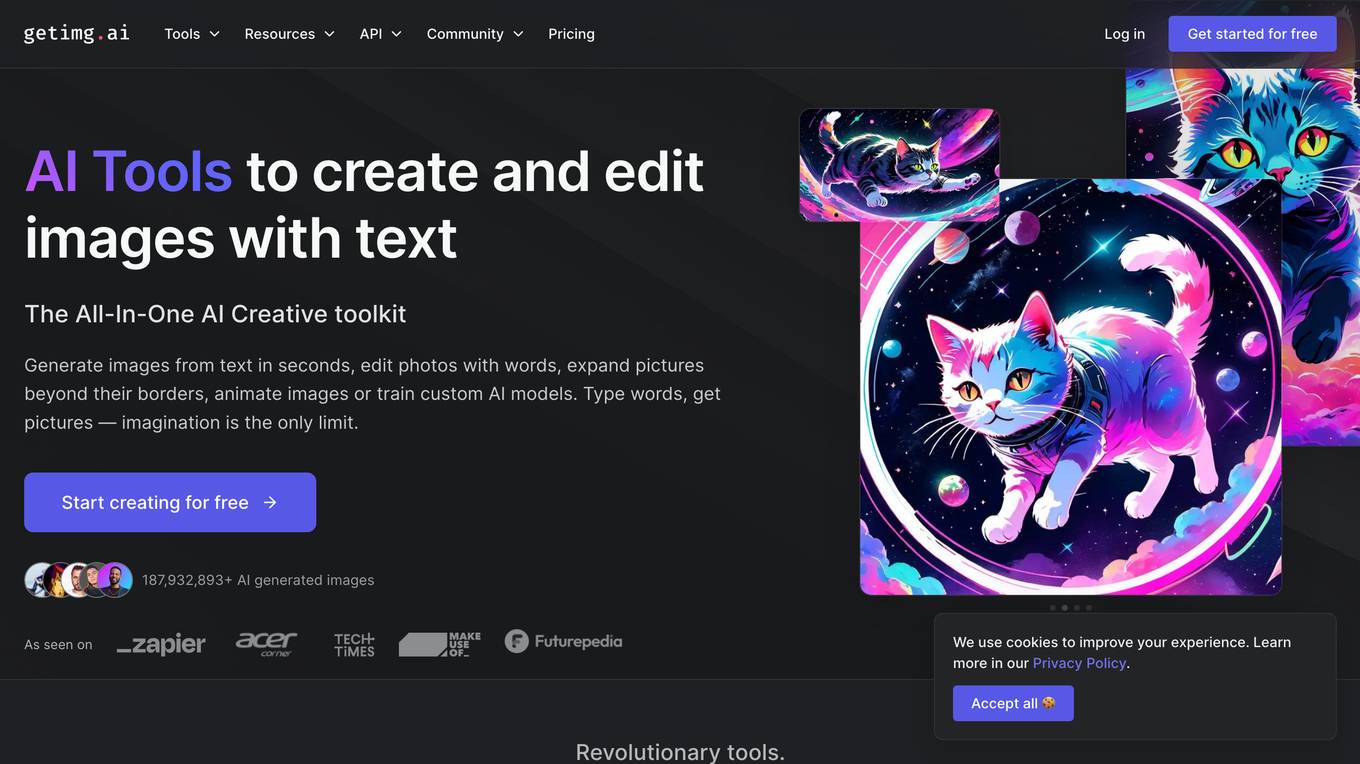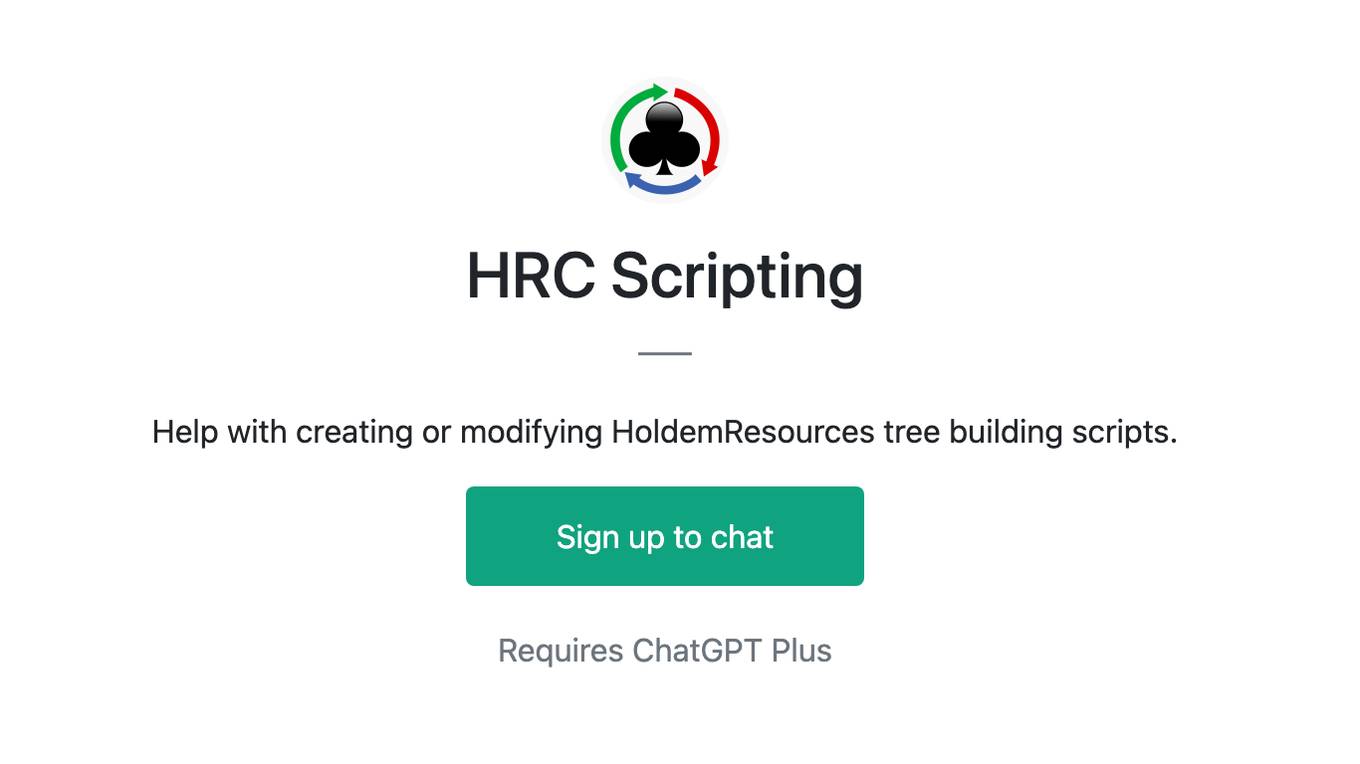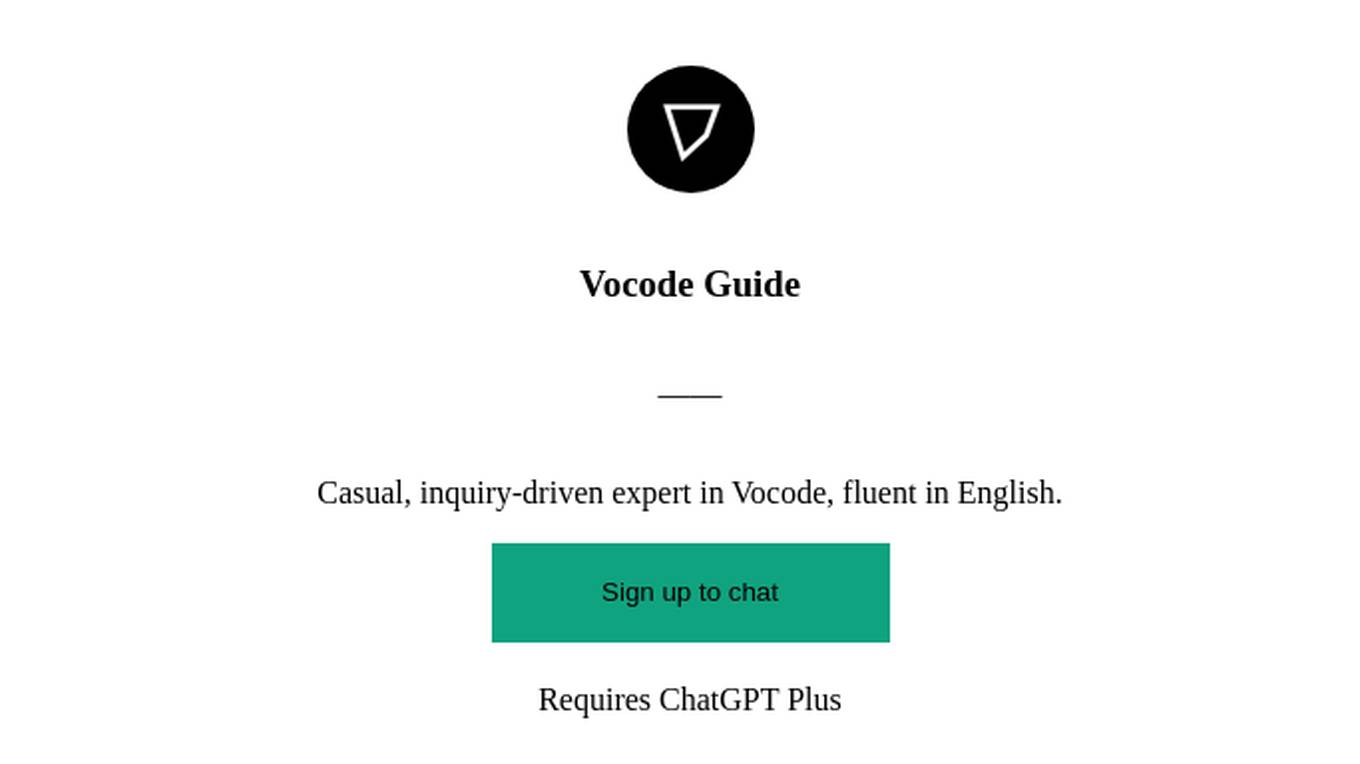Best AI tools for< Modify Scripts >
20 - AI tool Sites

Vozo
Vozo is an AI video generator application that allows users to rewrite, redub, and lip-sync their videos using prompts. It offers a range of tools to transform viral videos into new stories effortlessly. With Vozo, users can easily modify educational videos, create endless variants of ads, and translate videos into multiple languages. The application provides AI-driven prompts for rewriting scripts, redubbing with cloned voices, and editing voiceovers at the sentence level. Vozo also offers one-click multi-speaker lip-sync and video translation services with high precision. Users can repurpose their videos for different social platforms with just one click, ensuring maximum engagement across various platforms.

Dify
Dify is an open-source platform for building AI applications that combines Backend-as-a-Service and LLMOps to streamline the development of generative AI solutions. It integrates support for mainstream LLMs, an intuitive Prompt orchestration interface, high-quality RAG engines, a flexible AI Agent framework, and easy-to-use interfaces and APIs. Dify allows users to skip complexity and focus on creating innovative AI applications that solve real-world problems. It offers a comprehensive, production-ready solution with a user-friendly interface.

Real AI – Artificial Intelligence Photo Creator
Real AI – Artificial Intelligence Photo Creator is an application that allows users to create or modify photos using AI (artificial intelligence) technology. The app offers a variety of features, including high technology, fast performance, free updates, 24/7 support, awesome widgets, and smooth integration. Users can use the app to create realistic photos, enhance existing photos, or create unique works of art.

bookedit.cloud
The website bookedit.cloud offers a variety of content related to news, lottery, travel, lifestyle, history, sports, food, health, technology, and more. Users can find information on various topics such as travel destinations, cultural beliefs, healthy sleeping habits, sports events, and tourist attractions. The site covers a wide range of categories to cater to different interests and preferences.

NewFuku
NewFuku.com is an AI-powered platform that offers innovative solutions for transforming photos using artificial intelligence technology. Users can easily change backgrounds and outfits in their images with just a few simple steps, without the need for technical skills. The platform caters to a wide range of users, from individuals looking to enhance their photos to online retailers seeking to showcase their products in a creative and realistic manner. With its cutting-edge AI capabilities, NewFuku.com is revolutionizing the way people interact with digital images, providing high-quality, realistic transformations that respect various aspects of the original image.

FillDream
FillDream.net is an AI tool designed to help users fill their dreams by generating images based on input prompts. Users can upload an image and input prompts such as 'Cabin', 'Lake', 'Rocket', or 'Tree' to create customized images. The website offers a simple and intuitive interface for users to interact with the AI technology and bring their creative ideas to life.

Lazy AI
Lazy AI is an AI tool that enables users to quickly build and modify web apps with prompts and deploy them to the cloud with just one click. Users can create various applications such as customer portals, API endpoints for AI text summarization, metrics dashboards, web scrapers, chatbots, and discord bots. The platform offers a wide range of template categories and tools for automation, data mining, AI agents, dashboards, reporting, and more. Users can also access reusable templates from the Lazy AI community to streamline their development process.

GPTHero
GPTHero is a free website that focuses on modifying text to bypass AI detectors. Users can input any text, and the algorithm will obscure it to make it seem more human. The platform aims to improve writing and research by utilizing AI technology while opposing AI detectors that hinder the use of GPT and other language models.

Voice.ai
Voice.ai is a free real-time voice changer and the largest ecosystem of free AI voice tools. With Voice.ai, you can change your voice in real-time, clone voices, create soundboards, and more. Voice.ai is perfect for streamers, content creators, gamers, and anyone who wants to have fun with their voice.

GetImg.ai
GetImg.ai is an all-in-one AI creative toolkit that provides a suite of powerful AI tools for creating and editing images. With GetImg.ai, you can generate images from text, edit photos with words, expand pictures beyond their borders, animate images, or train custom AI models. The platform is easy to use and offers a variety of features and advantages that make it a valuable tool for creative professionals and anyone looking to create stunning visuals.

Vidura
Vidura is a prompt management system integrated with multiple AI systems, designed to enhance the Generative AI experience. Users can compose, organize, share, and export AI prompts easily. It offers features like categorizing prompts, built-in templates, prompt history, dynamic prompting, and community sharing. Vidura aims to make Generative AI accessible and user-friendly, providing a platform for learning and collaboration in the AI community.

ChartAI
ChartAI is an AI tool that allows users to customize bar charts from screenshots. Users can upload their chart images, and ChartAI's visual recognition technology extracts the data to recreate the chart. Users can adjust the style, add or remove data, and change the chart type effortlessly. The tool simplifies the process of creating charts and provides quick updates based on user requests.

Pikaswaps
Pikaswaps is an AI-powered video editing tool that allows users to effortlessly replace objects, characters, and backgrounds in videos using advanced video inpainting technology. With Pikaswaps, users can unleash their creativity by transforming their videos with realistic and seamless modifications. The application offers precise selections, customizable swaps, and instant previews to help users create professional-quality video content with ease.

Aleph AI
Aleph AI is a cutting-edge AI video editor and video generator that empowers users to edit and create stunning videos effortlessly through AI-powered editing. It offers advanced features such as AI video generation, object manipulation, style transfer, and real-time environment changes. With Aleph AI, users can achieve professional-grade video editing results in seconds, making complex visual transformations accessible to everyone.

Snapmark
Snapmark is a visual UI development tool that helps AI precisely understand user interface modification intent. By selecting page elements directly, Snapmark delivers accurate DOM information to AI, enabling it to generate code that meets expectations. The tool seamlessly integrates with mainstream browsers, IDEs, and AI models to ensure precise code generation. Snapmark leverages advanced AI models like OpenAI's GPT-4 and GPT-3.5, as well as Anthropic's Claude models, for high-quality code generation. It specializes in optimizing code for Next.js framework and Tailwind CSS utility classes, providing a seamless development experience for users.

RenderNet AI
RenderNet AI is a powerful tool for generating character-driven images and videos with unparalleled control. It allows users to create unique characters, perfect poses, modify images seamlessly, upscale creations for realism, and narrate stories with lifelike voices. RenderNet offers advanced features like FaceLock, ControlNet, and multi-model generations, setting it apart in character design and customization. The application is free to use with a daily credit limit, and users can join a vibrant creator community to collaborate and share ideas.

Generated Photos
Generated Photos is an AI-powered application that allows users to create unique, worry-free model photos using advanced AI-generated faces and full-body human generators. With a vast database of pre-generated diverse faces and realistic full-body images, users can enhance their creative works with high-quality photos. The application is perfect for various purposes such as ads, design, marketing, research, and machine learning. Users can search the gallery, create unique models in real-time, and even modify their own photos using the Face Generator and Human Generator tools. Generated Photos offers bulk download options, datasets, and API integration for large projects, making it a versatile tool for businesses and individuals seeking generative media solutions.

BRIA.ai
BRIA.ai is a visual generative AI platform that provides developers and businesses with the tools they need to build and deploy AI-powered applications. The platform includes a suite of pre-trained foundation models, APIs, and tools that can be used to generate and modify images, videos, and other visual content. BRIA.ai is committed to responsible AI practices and ensures that all of its models are trained on licensed and safe-to-use data.

Tolgee
Tolgee is an AI-powered localization tool that allows developers to easily translate their apps into any language. It offers in-context translation, AI translation, and collaboration features to streamline the localization process. With Tolgee, developers can modify texts directly in their app, get accurate translations based on context, and manage localization effortlessly. The platform integrates with popular apps and technologies, making it a versatile tool for global expansion.

NeuralBlender
NeuralBlender is a web-based application that allows users to create unique and realistic images using artificial intelligence. The application uses a generative adversarial network (GAN) to generate images from scratch, or to modify existing images. NeuralBlender is easy to use, and does not require any prior experience with artificial intelligence or image editing. Users simply need to upload an image or select a style, and the application will generate a new image based on the input. NeuralBlender can be used to create a wide variety of images, including landscapes, portraits, and abstract art. The application is also capable of generating images that are realistic, stylized, or even surreal.
1 - Open Source AI Tools

Wave-Executor
Wave Executor is a cutting-edge Roblox script executor designed for advanced script execution, optimized performance, and seamless user experience. Fully compatible with the latest Roblox updates, it is secure, easy to use, and perfect for gamers, developers, and modding enthusiasts looking to enhance their Roblox gameplay.
18 - OpenAI Gpts

GPT Creation Guide
GPT insights and explanations. 🛈 This software is free and open-source; anyone can redistribute it and/or modify it.

GPT-Info
Extensive guide for ChatGPT models. 🛈 This software is free and open-source; anyone can redistribute it and/or modify it.

Crispr Gene Editing for Agriculture
Expert in guiding genetic modification processes with scientific accuracy.

Image Recreator
Upload an image to recreate it using DALL-E 3. Each request should include 3 images with unique IDs and corresponding Midjourney prompts. You can instruct GPT to make modifications to a specific image by ID or recreate images using Midjourney. —公众号:Vito的AI力量

AI-AJASTU KODUTÖÖD
Lisa oma kodutöö ülesanne teksti või eraldi failina. Annan sulle tagasiside, kas õpilastel on seda võimalik liiga hõlpsasti tehisaruga ära lahendada. Pakun võimalusi, kuidas ülesannet muuta selliseks, et õpilane peaks rohkem oma aru selle lahendamisel kasutama.

Recipe Remix
Recipe Remix helps you discover and create new recipes based on the ingredients you have at home, dietary preferences, and desired cuisine.










